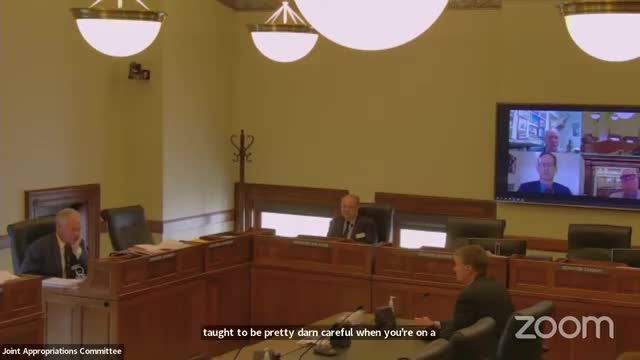State Auditor reveals urgent need for budget system overhaul
October 31, 2024 | Appropriations, Joint & Standing, Committees, Legislative, Wyoming
This article was created by AI summarizing key points discussed. AI makes mistakes, so for full details and context, please refer to the video of the full meeting. Please report any errors so we can fix them. Report an error »

In a recent government meeting, officials discussed the potential conflicts arising from the coexistence of a new shooting complex and existing grazing activities on state land. Concerns were raised about how these two uses might impact each other in the long term. The chairman acknowledged the lack of precedent for such a dual-use scenario on state land, emphasizing the need for careful management and communication between the shooting complex operators and grazing lessees.
Officials noted that discussions have been ongoing to find ways for both activities to coexist, with grazing primarily scheduled for winter months when shooting events are less frequent. This arrangement aims to minimize conflicts and ensure that grazing lessees can continue to utilize the land effectively, as it serves as a critical passage for their livestock.
The meeting also highlighted the importance of maintaining open lines of communication to address any potential displacement of grazing activities as the shooting complex expands. Officials expressed confidence that any necessary adjustments would be made collaboratively, ensuring that the needs of both parties are considered.
In a separate agenda item, the state auditor presented a report on the state's budget management and reporting system, known as IBARS. The auditor's office conducted a review to evaluate the system's effectiveness and explore options for upgrading or replacing it. The report revealed widespread dissatisfaction among users, who described IBARS as outdated and difficult to navigate, with significant training and support deficiencies.
The auditor outlined several options for the future of the system, including maintaining the current setup, investing in upgrades, developing a new custom solution, or transitioning to a Software as a Service (SaaS) model. The latter was identified as the most favorable option, aligning with modernization strategies and potentially offering a more efficient and user-friendly experience.
Cost estimates for transitioning to a new SaaS system ranged from $1 million to $1.3 million for implementation, with ongoing annual costs projected at approximately $125,000. The auditor emphasized that any procurement process would need to comply with state regulations, and further discussions would be necessary to finalize decisions regarding the budget management system's future.
Officials noted that discussions have been ongoing to find ways for both activities to coexist, with grazing primarily scheduled for winter months when shooting events are less frequent. This arrangement aims to minimize conflicts and ensure that grazing lessees can continue to utilize the land effectively, as it serves as a critical passage for their livestock.
The meeting also highlighted the importance of maintaining open lines of communication to address any potential displacement of grazing activities as the shooting complex expands. Officials expressed confidence that any necessary adjustments would be made collaboratively, ensuring that the needs of both parties are considered.
In a separate agenda item, the state auditor presented a report on the state's budget management and reporting system, known as IBARS. The auditor's office conducted a review to evaluate the system's effectiveness and explore options for upgrading or replacing it. The report revealed widespread dissatisfaction among users, who described IBARS as outdated and difficult to navigate, with significant training and support deficiencies.
The auditor outlined several options for the future of the system, including maintaining the current setup, investing in upgrades, developing a new custom solution, or transitioning to a Software as a Service (SaaS) model. The latter was identified as the most favorable option, aligning with modernization strategies and potentially offering a more efficient and user-friendly experience.
Cost estimates for transitioning to a new SaaS system ranged from $1 million to $1.3 million for implementation, with ongoing annual costs projected at approximately $125,000. The auditor emphasized that any procurement process would need to comply with state regulations, and further discussions would be necessary to finalize decisions regarding the budget management system's future.
View full meeting
This article is based on a recent meeting—watch the full video and explore the complete transcript for deeper insights into the discussion.
View full meeting